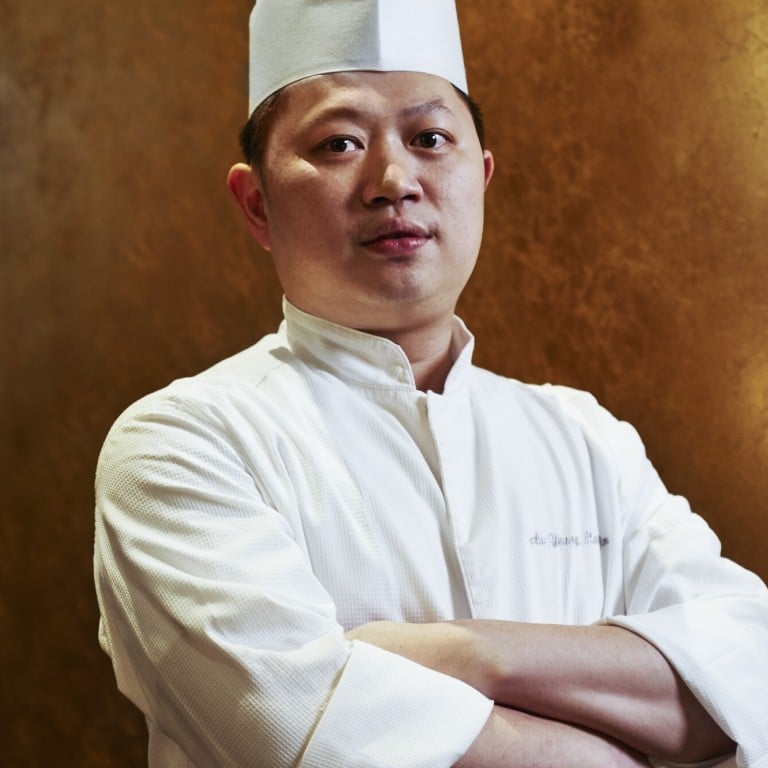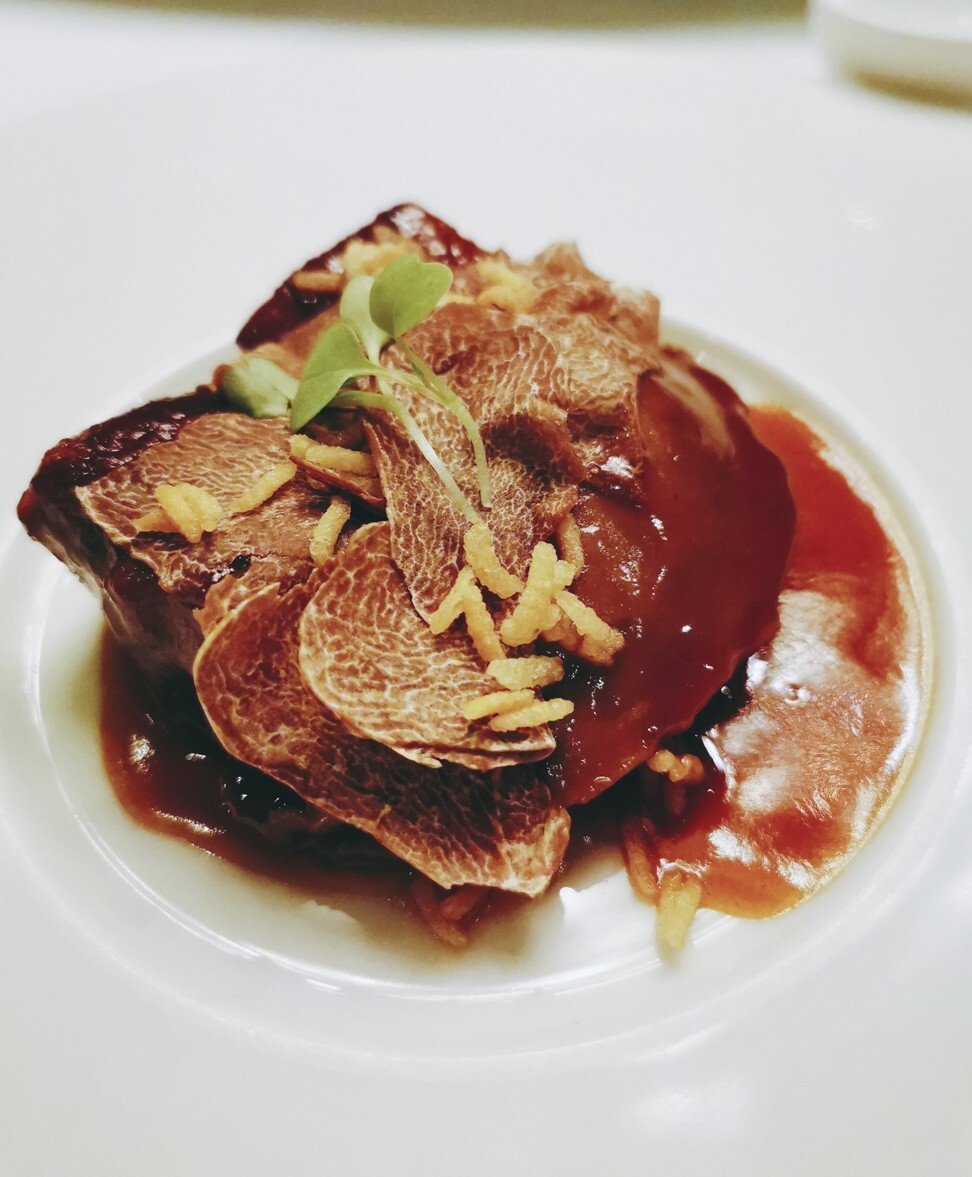
The Hong Kong chef reinventing Chinese classics at Macau’s three-Michelin-starred Jade Dragon restaurant
- Chef Kelvin Au Yeung’s inventive ideas breathe new life into dishes such as sweet and sour pork and rabbitfish soup
- He focuses on sustainability and elevating ‘local ingredients with luxurious ones’
How did you become a chef? “I fell in love with cooking at a young age and started my F&B [food and beverage] career at 15. I did not like academics and had no intention of furthering my studies in school.
“As a junior cook, it was important to gain the trust of master chefs who were willing to pass on their precious skills. So I worked extra hours, helped the masters as much as I could and stayed in the kitchen when others were taking a break or sleeping. After a while, the masters just handed the tasks to me and I got the opportunity to hone my skills.”
What has changed since you started working at Jade Dragon 10 years ago? “I have matured and grown a lot. Now, the pressure I face as a leader gives me an incentive to work harder. I might propose a dish, but we brainstorm as a team and when a new dish comes out we sit together, taste and discuss its origin and concept. It is a collective effort.”
How do you define refinement in a dining experience? “When guests come into the restaurant, our colleagues take time to introduce the menu and tea selection. The sommelier will also be there if needed. Our tea master has an important role because not everyone drinks alcohol. As the guests settle down, the kitchen takes control of the pace. The dining experience at Jade Dragon is presented in a refined manner – the devil is in the details, not just the food.”

Is there a culinary trend you follow? “Sustainability. My focus is mainly on sustainable beef and pork. Recently, during a gala dinner, I presented sustainable beef from Australia. I wanted something more luxurious than oxtail, sirloinor rib-eye, so my final thought was a slow-cooked Westholme beef cheek with abalone and white truffle. Premium dark soy sauce, light soy sauce, onion, garlic and rock sugar complemented the meat.
“The method of cooking was sous vide for 24 hours. Low temperature cooking ensures the protein is tender and the sauce infused sumptuously into the meat fibres.”
What are you most passionate about? “It is my passion to interact with guests. That’s how I learned one of the more popular choices in our restaurantis mantis shrimp steak. As everyone knows, eating mantis shrimp can be difficult – the meat sometimes sticks to the shells. I take out all the edible parts and make them into a steak, and the shells are wok-fried and turned into a concentrated sauce. Served with a knife and fork, the steak is hassle-free and the umami of the shells is kept intact.”
How is the teamwork at Jade Dragon? “It is important for our staff to feel proud of our restaurant so they work happily and are integrated. Many of them come to work early. I always tell them to share their opinions because I only have one brain – if everyone contributes ideas, we achieve better outcomes.
“Colleagues in the dining area are just as significant as those in the kitchen. Guests from different parts of the world have their own preferences and it is crucial their needs are communicated clearly.”

Where do you find inspiration? “The local market is a place chefs must go regularly. Books and social media platforms are also essential as modern chefs need to be aware of what is going on in culinary scenes around the world.
“In Macau, chefs source their ingredients globally and dishes are created with luxury in mind. We elevate local ingredients with luxurious ones. For instance, at Jade Dragon we have rabbitfish soup with fish maw and caviar, but the magic touch is 25-year-old chen pi [dried tangerine peel], which is used as seasoning and offers an extra layer of aroma as well as health benefits.”
What is your latest reinvention of a classic Cantonese dish? “One of our more interesting items is sweet and sour pork. I created a new version in which I replace rice vinegar with balsamic vinegar and the outer layer contains poppy-seed flour. When cooked correctly, it gives a magnificent texture. During preparation, sparkling water is added to the flour, imparting a fluffy quality, but when the pork is fried, the water is extracted so the overall texture is firm.”

